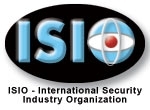Security Technology is used by security practitioners. The instruments are only as good as the users!
When the security consultant or the head of security knows exactly what impacts their own vulnerability landscape in their location and/or field of interest then they are able to brief their needs. They consider security criminology-risk investigation for identifying the behavior of a criminal method orchestrated by perpetrators or why human behavior reacts to certain threats or under specific conditions. It is not the weapon that is the issue – it is people. Obviously, we still have to detect a weapon.
IT being the designers of technology are obviously focused on their field of interest and unaware of issues relating to the criminology of a location or field of interest unless they experience first hand an incident or are informed via the media.
When the pandemic hit, the IT were educated via the media on masking and social distancing besides people having to sanitize using technology. However, it is the security industry that do the job on the ground for the ministries of health by using the technology and equipment to detect temperature, managing the flow and behavior of the people besides ensuring that they comply with the health protocols. However, the security industry considered more protocols because they are on the ground doing the work besides considering what tech should be be added. This is because there is crime related to the threat and would involve additional or evolved software for distinct purpose when managing an active biological threat.
The security manager is reliant on the technology and their workforce for different reasons. Some of the workforce are using the technology and others are on the ground looking for crime and stopping it or protecting the sites. They are also there to assist in saving lives.
There are many issues to consider which will dictate what technology to consider because even in this field there is crime. When IT software designers, manufacturers or integrators use illegitimate or make false claims on the performance of technology then the security practitioner that is using such could suffer reputational damage. Some of the technology may be used in the chain of evidence gathering. If the technology is scrutinized then the evidence will not be admissible.
When looking at the technology promoted by the IT industry, it seems that not many are talking with the actual end-users of the tech besides know the structure of the industry itself. The IT sector seek bi-lateral agreements with other technologies besides seeking out distributors and system integrators. The IT sector should consider that there are security consulting companies also advise the end users of what and where to purchase.
When IT are not knowledgeable on security criminology-risk then they will not identify unique needs that should be addressed until the first IT company finds out and the others copy such.
There are security consultants that are highly knowledgeable in security criminology-risk and know exactly what technology and addons are required for specific purpose. Giving an example, would be that the security criminology-risk practitioner would ask for two way anti-tailgating because their intention is to litigate stalkers, opportunistic rapists, murders, or kidnappers. Besides such at certain sites would use the same along with object monitoring to litigate corruption (for distinct reasons). More could be added to litigate other associated threats for distinct reason that is mentioned in the AI booklet.
The Security Managers are fully aware of the fact that the technology industry is heading more-so into AI (artificial intelligence). They know that a visual platform [PSIM (physical security investigation/information management system) can triangulate all technologies. They know already ‘real’ AI is being used and highly effective besides even knowing how it can be used for profit protection and for other reasons. They also aware that other intelligence giving resources would need to be integrated be it other technologies, IoT, equipment, or reporting from the ground to comprehend the full truthful picture. This could be by following the MO (modus operandi/pattern) of various indicators from specific intelligence sources and evidence gathering using the above for distinct reason including different investigation methodologies from silo experts.
In conclusion the IT developers besides integrators should consult with security criminology-risk investigators who are the actual investigators (researchers) on the ground identifying criminal behavior and following emerging threats. The IT industry should know that the practitioners work in the fastest changing vulnerability landscape than another other sector. There are millions of criminals and perpetrators trying to out-think and outsmart the security system (technology and workforce) every minute of the day somewhere in the world. Therefore, the react speed in identifying the threat, research speed and solutions introduced is vital to limiting or mitigating threats that deliver life impacting or deadly outcomes.
There may be comments added to this article or others trying to promote their IT or any form of service. It is advisable before subscribing to any security consulting group, technology or equipment to at least view the AI booklet for security criminology-risk on what it is, how it works and how to get the most out of it by merging technology with the workforce.
